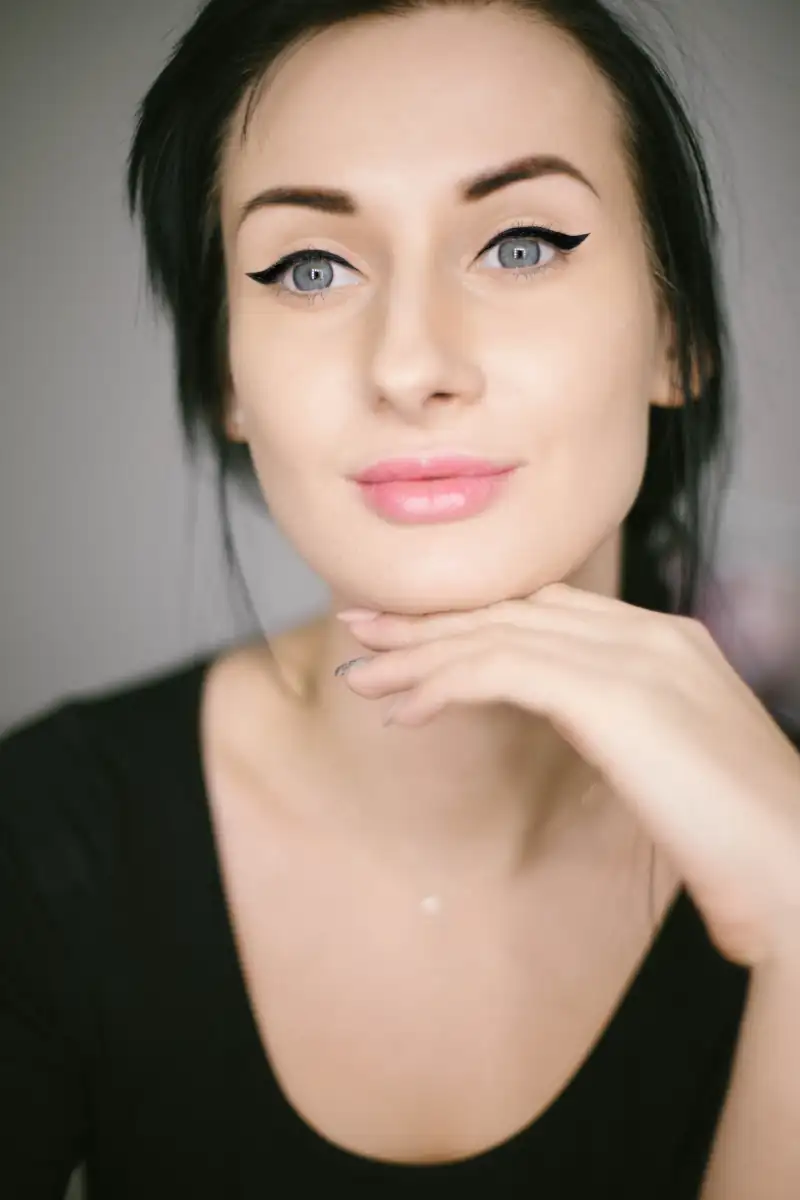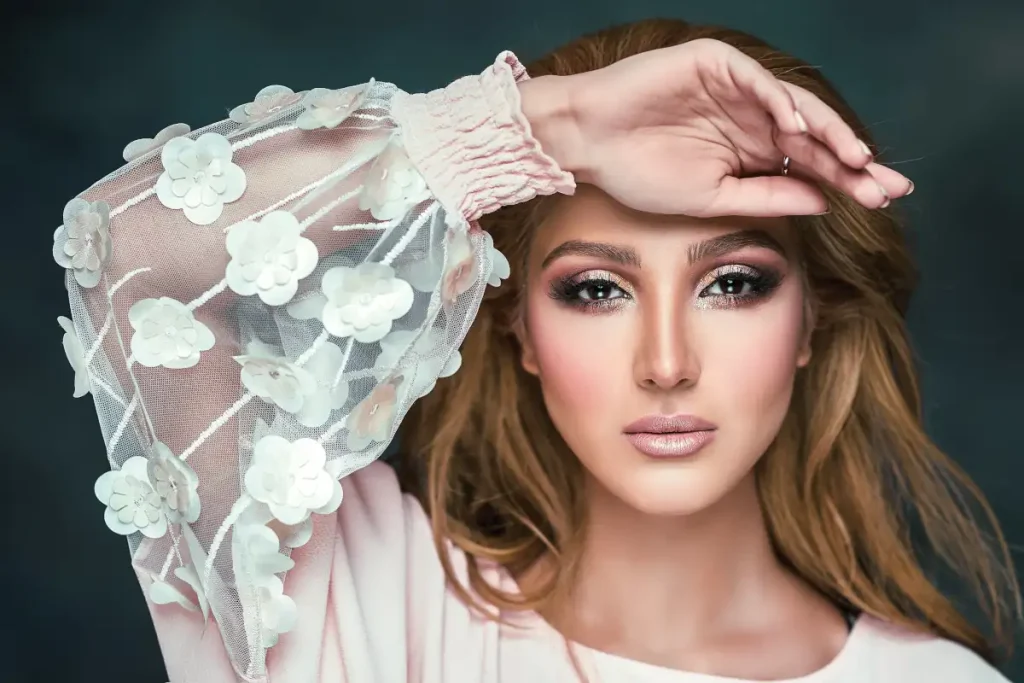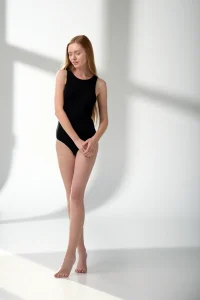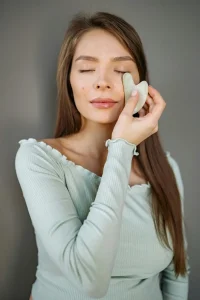Discover the Effective Solutions at Aesophy Clinic
Crow's feet, those small wrinkles that form around the eyes, are one of the most visible signs of skin aging. From the age of 40, many people begin to notice their presence, and although they can be a natural reminder of the passage of time, it is not necessary to resign ourselves to living with them. At Clínica Aesophy, we understand the importance of maintaining a fresh and youthful appearance, and we offer effective solutions to combat crow's feet. Would you like to say goodbye to those wrinkles and regain confidence in your eyes? Read on to find out how we can help you!
The Crow's feet They make you feel insecure and take years off your shoulders? You are not alone. After 40, these small wrinkles around the eyes become more evident, affecting the luminosity and youthfulness of the look. But don't worry, there is a solution! In Aesophy Clinic We offer you a range of custom treatments for combat crow's feet and help you regain a radiant and rejuvenated look.
What are Crow's Feet and why are they formed?
Before diving into the effective solutions we offer at Clínica Aesophy, it is important to understand what crow's feet are and why they form.
Crow's feet are fine wrinkles that form in the outer corners of the eyes. They appear as a consequence of the loss of collagen and elastin, dehydration and repetitive muscle contraction.
Crow's feet, technically known as "laugh lines" or "expression lines," are fine wrinkles that appear around the eyes due to a number of factors, including:
- Natural Aging: Over time, the skin tends to lose collagen and elastin, two essential proteins that give it firmness and elasticity. This makes the skin more prone to wrinkles and expression lines.
- Sun exposure: Excessive sun exposure without protection can damage the skin and accelerate the aging process, increasing the appearance of crow's feet.
- Repetitive movements: Laughing, blinking, and frowning are common facial movements that can contribute to the development of these wrinkles over time.
- Genetic factors: Genetics also plays an important role in predisposition to crow's feet.
Causes of crow's feet:
- Age: Collagen and elastin production decreases with age, making the skin more prone to wrinkles.
- Solar exposition: The sun's UV rays damage the skin and accelerate the aging process.
- Facial gestures: Smiling, squinting, or frowning repeatedly can contribute to the formation of crow's feet.
- Genetic factors: Genetic predisposition can also influence the appearance of crow's feet.
Our Experience at Aesophy Clinic
At Clínica Aesophy, we have a team of experts in dermatology and aesthetic medicine who perfectly understand the challenges that crow's feet can present. Our experience and knowledge allow us to offer a wide range of treatments specifically designed to address these wrinkles and provide noticeable results.
Innovative Treatments to Combat Crow's Feet
For those who want to say goodbye to crow's feet, we offer a variety of effective treatments at Clínica Aesophy. Our personalized approach is tailored to each patient's unique needs and may include:
- Neuromodulators: One of the most popular and effective options to soften crow's feet. The Neuromodulator is injected into the muscles around the eyes to relax them and reduce the appearance of wrinkles.
- Dermal Fillers: We use high-quality dermal fillers to fill and smooth wrinkles, achieving a more youthful and rejuvenated appearance.
- Laser Treatments: Laser treatments can stimulate collagen production and improve skin texture, thereby reducing the appearance of crow's feet.
- Chemical peel: Eliminates dead cells from the skin's surface, improving texture and tone, and promoting cell renewal.
- Radio frequency: It produces a controlled heating of the skin, stimulating the production of collagen and elastin for a lifting effect without surgery.
- Personalized Skin Care: Our skin care experts can recommend specific products and routines to maintain healthy skin and prevent future wrinkles.
Why Choose Aesophy Clinic for the Treatment of Crow's Feet
Choosing the right center for crow's feet treatment is crucial to ensuring safe and effective results. At Clínica Aesophy, we offer a series of advantages that make us stand out in the field of aesthetic medicine:
- Highly Qualified Professionals: Our team is made up of dermatologists and aesthetic doctors with extensive experience treating crow's feet and other aesthetic concerns.
- Advanced technology: We use cutting-edge technology and high-quality products to guarantee exceptional results.
- Custom Approach: Each patient receives a treatment adapted to their specific needs and objectives.
- Safety and Comfort: We prioritize the safety and comfort of our patients every step of the process.
Frequently Asked Questions about Crow's Feet Treatment
1. How long do the effects of crow's feet treatments last?
The duration of the effect may vary depending on the treatment chosen, but in general, the results usually last from several months to a year or more.
2. Are the treatments painful?
Most of our treatments are little or no painful. Topical or local anesthesia may be applied to ensure patient comfort during the procedure.
3. Is there recovery time after treatments?
In most cases, patients can return to normal activities immediately. There may be slight temporary redness or swelling, but this usually goes away quickly.
4. Can I combine treatments to obtain better results?
Yes, at Clínica Aesophy, we can customize a treatment plan that includes multiple approaches to achieve the best possible results.
Recover Youth and Confidence in your Looks!
Crow's feet may be an aesthetic concern, but you don't have to live with them. At Clínica Aesophy, we are committed to helping you say goodbye to those wrinkles and regain confidence in your eyes. Our innovative treatments and personalized approach will give you remarkable results.
Contact us today to schedule a consultation and take the first step toward a fresher, more rejuvenated look! Don't wait any longer to discover how we can help you look and feel better. Your beauty and well-being are our priority at Clínica Aesophy.
Testimonials:
«Thanks to Clínica Aesophy, I have managed to eliminate crow's feet and now I feel much more confident about myself.» - Sandra
«I am very happy with the results of my treatment. My eyes look younger and more radiant.
Make your appointment to eliminate your crow's feet at Clínica Aesophy:
Request your free appointment at Clínica Aesophy and discover how we can help you eliminate crow's feet and show off a younger, more radiant look.
Frequently asked questions Crow's feet after 40
What are crow's feet and why do they form after 40?
Crow's feet are a colloquial term used to describe fine wrinkles and expression lines that form in the corners of the eyes, specifically in the outer area of the eyes. These lines usually have a similar appearance to the legs of a rooster when it spreads its feathers, hence its name.
Crow's feet are a natural sign of skin aging, and it is common for them to begin to appear after the age of 40, although the exact age at which they develop can vary from person to person. Several factors contribute to the formation of crow's feet after 40:
Loss of skin elasticity: With aging, the skin tends to lose elasticity due to decreased collagen and elastin production. This makes the skin less able to maintain its firmness and fold more easily, leading to the formation of wrinkles, including crow's feet.
Exposure to the sun: Chronic sun exposure over years can damage the skin and accelerate the aging process. The sun's UV rays can degrade collagen and cause the premature formation of wrinkles, including crow's feet.
Repetitive eye movements: The constant action of blinking and making facial gestures, such as smiling or squinting, can contribute to the formation of expression lines around the eyes over time.
Genetics: Genetic predisposition plays an important role in how each individual's skin ages. Some people may be genetically more likely to develop crow's feet than others.
Skin care habits: Lack of proper skin care, such as not using sunscreen, not properly moisturizing your skin, or not following a facial care routine, can contribute to premature skin aging and the formation of wrinkles.
It is important to note that while crow's feet are a natural sign of aging, there are various treatments and procedures available in aesthetic and dermatological clinics that can help reduce the appearance of these wrinkles and rejuvenate the skin around the eyes. These treatments may include the use of neuromodulators, dermal fillers, lasers, and other specialized procedures designed to improve the appearance of this area.
Are crow's feet reversible?
Crow's feet, once they have formed, are not completely reversible in the sense that they cannot be completely removed permanently without medical interventions or cosmetic procedures. However, it is possible to significantly reduce their appearance and make them less visible through various methods and treatments.
Below are some of the approaches used to treat crow's feet:
Neuromodulators: It is a very effective treatment to reduce the appearance of crow's feet. It works by temporarily relaxing the muscles around the eyes, which softens lines and wrinkles. Results may last several months before repeat treatment is necessary.
Dermal fillers: Hyaluronic acid-based dermal fillers can be used to fill wrinkles and fine lines around the eyes. These fillers restore lost volume and can provide a more youthful appearance. The results are temporary and can last several months or longer, depending on the type of filler used.
Laser procedures: Laser treatments, such as fractional laser, can stimulate collagen production and improve the texture of the skin around the eyes. This can significantly reduce the appearance of crow's feet, but several sessions are usually required to achieve optimal results.
vitamin mesotherapy: Facial mesotherapy involves injecting a mixture of vitamins and nutrients into the skin to improve its appearance and stimulate cell regeneration. May help reduce the appearance of wrinkles, including crow's feet.
Skin care and sun protection: Maintaining a proper skin care routine, including cleansing, moisturizing, and regular use of sunscreen, can prevent the formation of new wrinkles and minimize the worsening of existing ones.
While these treatments may make crow's feet less noticeable, it is important to remember that skin aging is a natural and ongoing process. The choice of a treatment will depend on the severity of the wrinkles and personal preferences. It is advisable to consult a dermatologist or skin care medical professional for a personalized evaluation and recommendations.
What are the most effective treatments for crow's feet after 40?
The most effective treatments for crow's feet over 40 can vary depending on individual needs and preferences, as well as the severity of the wrinkles around the eyes. However, below are some of the most commonly used and effective treatments to address crow's feet at this stage of life:
Neuromodulators: It is one of the most popular and effective treatments to reduce the appearance of crow's feet. It works by temporarily relaxing the muscles around the eyes, which softens expression lines. Results are visible within a few days and can last several months before needing a touch-up.
Dermal fillers: Hyaluronic acid-based dermal fillers are another effective option for treating crow's feet. These fillers help fill in wrinkles and fine lines around the eyes, restoring lost volume and providing a more youthful appearance. The results are temporary and can last several months.
Laser procedures: Laser treatments, such as fractional laser or CO2 laser, can stimulate collagen production and improve the texture of the skin around the eyes. These procedures can significantly reduce the appearance of crow's feet, but multiple sessions are often required for optimal results.
vitamin mesotherapy: Facial mesotherapy involves injecting a mixture of vitamins and nutrients into the skin around the eyes to improve its appearance and stimulate cell regeneration. It can help smooth wrinkles and provide a fresher look.
Microneedling (Dermapen): The Dermapen is a microneedle device that stimulates the production of collagen and elastin in the skin. It can improve the texture and firmness of the skin around the eyes, reducing the appearance of crow's feet.
Skin care and sun protection: Maintaining a proper skin care routine that includes cleansing, moisturizing, and the constant use of sunscreen is essential to prevent the formation of new wrinkles and preserve the results of treatments.
Choosing the most appropriate treatment depends on factors such as the severity of your crow's feet, budget, desired recovery time, and personal preferences. It is important to consult a dermatologist or skin care medical professional for a personalized evaluation and recommendations specific to your situation. Additionally, a combination of treatments can often be more effective in addressing crow's feet and other signs of aging around the eyes.
Are crow's feet treatments safe?
In general, crow's feet treatments performed by medical professionals or dermatologists are safe when carried out properly and the professional's recommendations are followed. However, as with any medical or cosmetic procedure, there are certain risks and considerations that you should take into account:
Temporary side effects: Some treatments, such as neuromodulators or dermal fillers, may have temporary side effects, such as swelling, redness, or bruising at the injection site. These side effects are usually mild and disappear within a few days or weeks.
Allergic reactions: In rare cases, people may experience allergic reactions to ingredients used in dermal fillers or other products used in treatments. It is important to inform your healthcare professional of any known allergies before undergoing treatment.
Undesirable results: If the treatment is not performed correctly or is not tailored to your specific needs, you could experience undesirable results. It is essential to choose a professional with adequate experience and training to minimize this risk.
Infection: There is always a minimal risk of infection at the injection or treatment site. Medical professionals often follow strict hygiene protocols to prevent infection, but it is important to follow postoperative instructions to reduce this risk.
Asymmetry or irregularities: In some cases, treatments can lead to asymmetry or irregularities in the appearance of the skin. This can be corrected in some cases, but it is essential to discuss any concerns with your healthcare professional immediately.
Risks associated with surgery: Some treatments for crow's feet, such as blepharoplasty (eyelid surgery), carry specific risks associated with the surgery, such as scarring, infection, or healing problems. These risks are usually low, but should be discussed in detail with an experienced plastic surgeon.
It is important that before undergoing any treatment for crow's feet, you make sure that the professional is properly certified and has experience in the procedure you want. Additionally, you should discuss any questions or concerns you have with your doctor before starting treatment.
Your healthcare professional will provide you with detailed information about the specific risks and benefits of each treatment, as well as the measures that will be taken to ensure your safety and well-being during the procedure. As a patient, it is essential to follow post-operative instructions and schedule follow-up checkups as recommended by your doctor to obtain the best results and minimize any potential risks.
How long do the results of the treatments last?
The duration of results from crow's feet treatments may vary depending on the type of treatment used and each person's individual response. Here I provide you with a general estimate of how long the results of the most common treatments usually last:
Neuromodulators: Results are usually visible a few days after treatment and can last on average 6 to 12 months. After this period, the muscles begin to regain their activity, which means that booster injections need to be scheduled to maintain the results.
Dermal fillers: The duration of results from hyaluronic acid-based dermal fillers varies depending on the product used and the location of the injection. In general, results can last 6 months to 2 years, depending on the type of filler and the body's natural absorption rate.
Laser procedures: The results of laser procedures, such as fractional laser, can be long-lasting, but typically require multiple sessions for optimal results. The exact duration may vary depending on the person and the type of laser used.
vitamin mesotherapy: Facial mesotherapy usually requires a series of initial treatments followed by periodic maintenance sessions. Results may be visible for several months, but the frequency of maintenance sessions may vary depending on individual needs.
Microneedling (Dermapen): The results of microneedling are usually long-lasting as it stimulates collagen production in the skin. You may experience improvements for several months after treatment, and follow-up treatments may be required to maintain long-term results.
It is important to note that the duration of results may vary depending on each person's age, genetics, lifestyle and quality of skin care. Additionally, some treatments may require periodic booster sessions to maintain long-term results.
To maintain the desired appearance and prolong the results of treatments, it is essential to follow the recommendations of your medical professional or dermatologist. This may include using recommended skin care products and scheduling maintenance sessions as directed by the professional.
Are procedures to treat crow's feet painful?
The perception of pain in procedures to treat crow's feet can vary from person to person and also depends on the type of treatment used.. Some treatments are minimally invasive and generally cause mild discomfort, while others may be a little more uncomfortable. Below are common sensations associated with some treatments:
Neuromodulators: These treatments usually cause a stinging sensation or a small prick at the time of injection. Most people tolerate the procedure well and do not experience significant pain.
Dermal fillers: Dermal filler injections may cause sting-like discomfort or mild pressure on the skin. Some dermal fillers contain a local anesthetic to minimize discomfort during the procedure.
Laser procedures: Laser procedures typically cause a momentary warm or burning sensation on the skin, which can vary in intensity depending on the type of laser used. The professional may apply a topical anesthetic gel or cream to reduce discomfort.
vitamin mesotherapy: Facial mesotherapy generally involves a series of superficial injections into the skin. The discomfort is minimal and can be compared to a momentary itching sensation.
Microneedling (Dermapen): The Dermapen uses microneedles to stimulate the skin. It may cause pinching or stinging sensations, but most patients tolerate the procedure well. An anesthetic cream may be applied to reduce discomfort.
It is important to communicate your concerns about pain or discomfort to your healthcare provider before the procedure. They may take steps to minimize discomfort, such as using local anesthesia, applying topical numbing creams, or using cooling techniques.
In most cases, the discomfort is temporary and disappears shortly after the procedure. Plus, most people find the results worth the temporary discomfort. If you have a low pain tolerance, you can discuss pain relief options with your healthcare provider before beginning treatment.
Do I need recovery time after treatments?
Recovery time after crow's feet treatments can vary depending on the type of procedure you have chosen and your individual response to that treatment. Below are typical recovery time considerations for some of the most common treatments:
Neuromodulators: This treatment generally has minimal recovery time. You can resume your normal activities immediately after treatment. You may experience some temporary side effects, such as redness or small bumps at the injection site, but these usually go away within a few days.
Dermal fillers: Recovery after dermal fillers is generally brief. You can return to your normal activities after treatment. You may experience swelling, redness, or bruising at the injection site, but these side effects are usually temporary and resolve within a few days.
Laser procedures: Recovery time after laser procedures can vary depending on the type of laser used. There may be redness, swelling, or tenderness of the skin for a few days to a week after the procedure. The professional will provide you with specific aftercare guidelines.
vitamin mesotherapy: Recovery after facial mesotherapy is generally quick. You can return to your normal activities immediately after treatment. You may experience slight swelling or redness, but this is usually temporary.
Microneedling (Dermapen): Recovery after microneedling may include redness and tenderness of the skin for a few days. Recovery time is generally short, and you can return to your normal activities with appropriate aftercare.
It is important to follow the instructions provided by your healthcare professional or dermatologist after treatment. This may include avoiding sun exposure, applying recommended skin care products, and following a specific aftercare routine. It is also essential to schedule any recommended follow-up appointments to evaluate results and ensure adequate recovery.
Keep in mind that some procedures, such as blepharoplasty (eyelid surgery), may have a longer recovery time and require additional care and restrictions for several weeks. Always discuss your recovery time expectations with your medical professional before undergoing treatment so you are fully informed about what to expect.
Can I combine several treatments to obtain better results?
Yes, in many cases, combining several treatments can be an effective strategy to obtain better results in the treatment of crow's feet and other signs of aging around the eyes. This combination of treatments is known as “combination treatment” or “multimodal approach.” The choice of specific treatments and the sequence in which they are performed will depend on your individual needs and the evaluation of your medical professional or dermatologist.
Below are some examples of how different treatments can be combined to address crow's feet more effectively:
Neuromodulators and dermal fillers: Neuromodulator can be used to relax the muscles around the eyes and smooth fine lines, while dermal fillers can be used to fill in wrinkles and restore lost volume. This combination can provide a complete approach to rejuvenate your eyes.
Neuromodulators and laser procedures: Combining neuromodulator with laser procedures can address both dynamic wrinkles (caused by muscle movements) and static wrinkles (caused by aging and sun exposure). The laser can improve the texture and quality of the skin around the eyes.
Dermal fillers and vitamin mesotherapy: This combination can help smooth wrinkles and improve skin hydration. Dermal fillers provide volume, while mesotherapy delivers essential nutrients to the skin.
Microneedling (Dermapen) and laser procedures: Using microneedling to stimulate collagen production along with laser procedures can improve the texture and firmness of the skin around the eyes more completely.
Dermal fillers and laser procedures: Combining dermal fillers to treat static wrinkles with laser procedures to improve skin quality can be effective in addressing multiple aspects of aging in this area.
The choice of treatment combination will depend on your specific goals and the evaluation of an experienced medical professional. It is important to discuss your expectations and concerns with your doctor, who can design a personalized treatment plan to achieve your desired results. Additionally, keep in mind that the safety and effectiveness of any combination of treatments should be evaluated by a professional with experience in aesthetic procedures.
Where can I find the best aesthetic clinic for my crow's feet treatment near me?
If you are looking for the best aesthetic clinic for your crow's feet treatment near you, look no further than Aesophy Clinic. We are your trusted destination to rejuvenate your look and say goodbye to crow's feet safely and effectively.
Our clinic is dedicated to providing high quality treatments, backed by a team of experts in facial care and advanced technology. Your beauty and well-being are our priority, and we are here to help you recover a younger and more radiant appearance.
Contact us today and find out how Aesophy Clinic It can transform your look and your confidence!
Book Appointment Crow's feet from 40 Best specialized clinic in Malaga
- +34 (952)333 444
- info@aesophy.clinic
- consult online
Request information / Request an appointment Crow's feet treatment after 40









